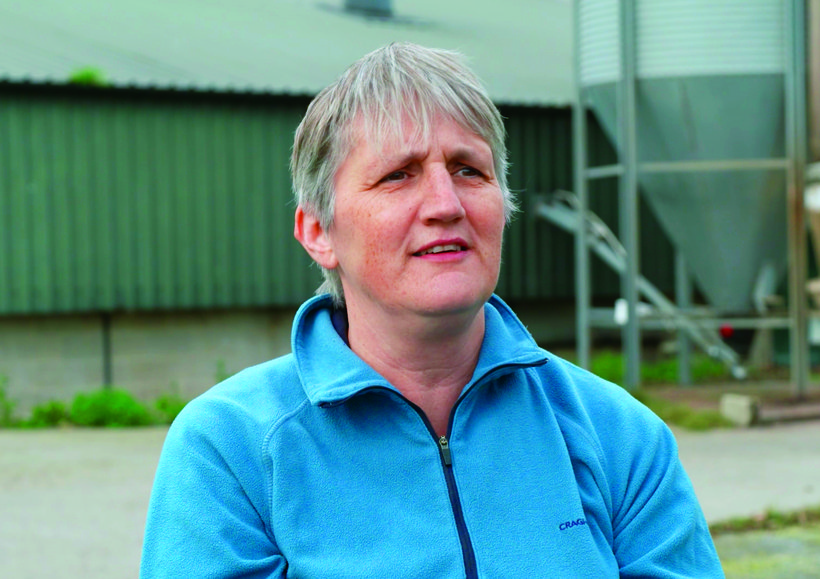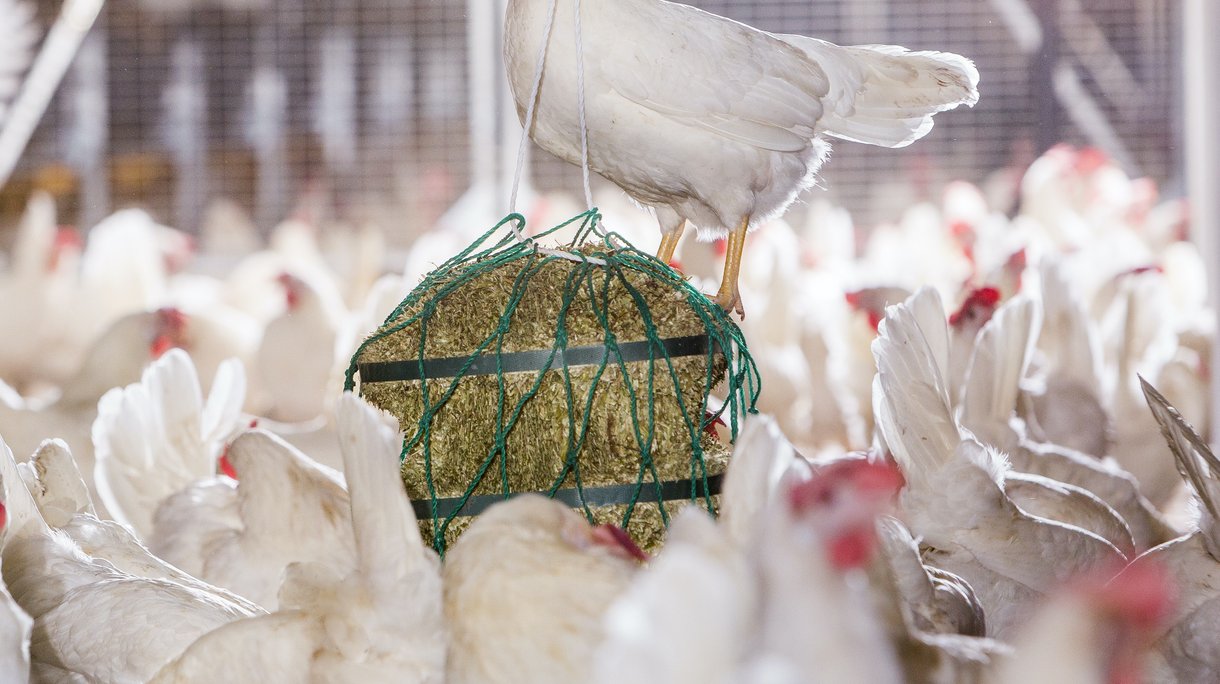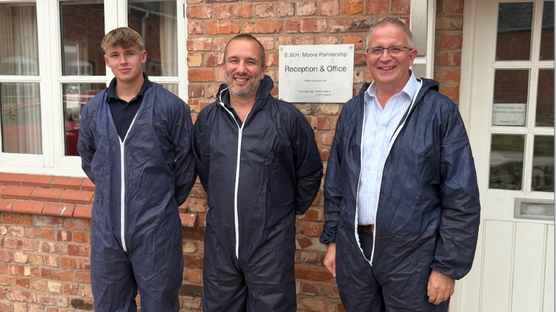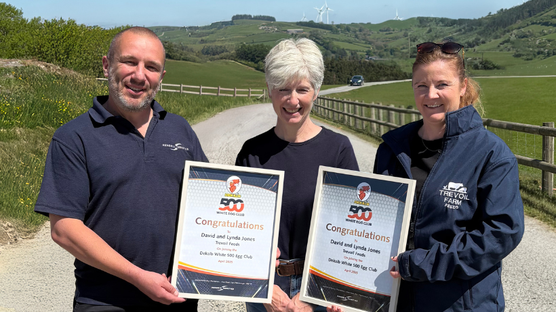
Published on May 6, 2025
Absolutely Brilliant Dekalb White Performance in Barn System!
Helen Ridley of Talbot Farms has recently depleted a flock of Dekalb White birds, after recording outstanding egg numbers of 542.4 eggs per hen housed, over a 103-week cycle.
In this article, she reflects on the amazing performance and the distinctive characteristics of her 12,000 Dekalb White birds, which were housed in a flatbed system, with the eggs destined for a barn contract with Noble.
Talbot Farms was established when Ed Chetwynd-Talbot branched out into the poultry sector. He started the business 14 years ago, with a 16,000 unit, which he was able to build on his father in law’s land. In 2020, seeking to expand the business, he began renting additional units, and in the same year Helen Ridley joined the business. As farm manager with Talbot Farms, she is now kept busy dealing with staff, audits, testing and turnarounds for their 12,000-bird flat deck barn unit, two 6000 organic flat deck houses and three 16,000 multi-tier systems, located across Lincolnshire and Rutland.
With flocks producing for free range, barn and organic egg contracts across flat deck and multitier housing systems, she is well placed to observe the performance and behavioural differences between white and brown birds.
Remarkably robust
“The first two flocks in this particular house were brown free-range birds” she explains “but we felt that the house would be more productive if we took a different approach, and we approached Noble for a white egg contract. So, the third flock we have housed on this farm is white and I have to say there is no comparison in performance. The Dekalb White birds, hatched by Joice and Hill, are remarkably robust and have presented noticeably fewer challenges.
“The birds came in May 2023, and were depleted on 24th January, with a new flock of Dekalb White birds due to arrive on 17th March. I am sure this flock could have gone to at least the 10th February but there were other limiting factors. Firstly, the need to plan so far ahead for depletion and the new flocks arriving - these decisions are all made before you see how the birds are performing!
“Indeed, the birds could have carried on, but to be honest the shed was ready for a turnaround before the birds, it was more the system than the birds. It is a deep pit
flat deck unit with wooden floors and wooden side belts, so we need to be sure there is enough space for muck, which is a further limiting factor, but nothing to do with the birds.

Easier to manage
“I would say the white birds are definitely easier to manage than the brown hens. As a manager I go from the brown hens on one day and then come to this farm with white hens, on a different day, and I have to readjust to the way that they are behaving. Their mannerisms are different to brown, they prefer to keep out of your way, although they get more inquisitive as they get used to staff. They've been well behaved; they've not really jumped up or pulled anything down.
“We stayed with them for the first few nights as the lights went off and they went to bed, calmer than the brown hens do. Routine is important to all birds, and we give the white flock continuity, walking in at same time every day and making sure feeders run reliably at a consistent time. The white birds respond to calm and considerate staff and the more time you spend with them the better. We have very good staff and Tammy, who runs the packing line, talks to the birds and is generally brilliant. But she will admit white birds took some getting used to!
“Performance wise, they've done absolutely brilliantly. They ramped up so fast on production. We were over 90%, I think 93 point something percent, by week 21. They just came in so very, very quickly and at 35 weeks we had had our 10th week at 97% plus, which we were really, really pleased with. The thought out there is that they lay a smaller egg, but certainly in our experience they're laying a really good-sized egg.
“Over in Europe, white eggs have taken off much more so than they have here, and I'd like to see that happening over here as well. I'm really hopeful that white eggs aren't just seen as a value product, but are able to blend in, and be seen alongside the brown eggs.
“I've noticed more white eggs in the supermarkets, both free range and as barn, and I just hope that there will be more contracts out there for them, and they get into the market on a steadier basis. We would definitely like to get more white birds; they are part of the plan for the future and may well be in barn systems”.
Speaking about the results, Jordan Tweedale, Joice and Hill Area Technical Sales Manager for the North East, Yorkshire, Notts & Lincs said “This is a testament to Helen’s management skills, further proof of the potential of white birds and of the Dekalb White in particular. Often described as the most productive layer in the world, the Dekalb White combines excellent liveability, extended production cycles, superb persistency, and an excellent feed conversion ratio - consistently producing high numbers of first quality eggs, per hen housed. Their performance in free range is well documented, and to ensure continuity of supply, Joice and Hill operate their own UK based Parent Stock farms”



